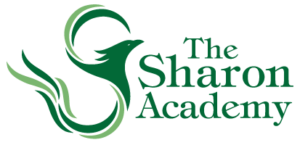Personalized Learning
In This Section
|
Personalized Learning describes systems and approaches that deepen student learning by incorporating each student’s interests, strengths and needs – including student voice and choice in what, how, when and where they learn – to achieve the goals of active engagement, academic success, and preparation for post-secondary opportunities. Flexible Pathways is one form of personalized learning.
Flexible Pathways were created by the Vermont legislature (1) to encourage and support the creativity of school districts as they develop and expand high-quality educational experiences that are an integral part of secondary education in the evolving 21st Century classroom; (2) to promote opportunities for Vermont students to achieve post-secondary readiness through high-quality educational experiences that acknowledge individual goals, learning styles, and abilities; and (3) to increase the rates of secondary school completion and post-secondary continuation in Vermont.
Some examples of Flexible Pathways that are available at TSA include:
Dual Enrollment:
College level courses taken through an accredited college or university for high school and college credit during a student’s junior or senior year of high school. This is a course enrollment on the TSA Flexible Pathway application. If space is available, participating students can CHOOSE if they want to participate in the Flexible Pathway Guided Study Hall.
Early College Program:
full-time programs that are developed and operated by one of the Vermont State Colleges or an accredited private post-secondary school located in Vermont, and that are approved for operation by the Secretary of Education. Students must apply during their junior year. Example: VAST. This is a course enrollment on the TSA Flexible Pathway application.
Career and Technical Education:
Often takes place at Career and Technical Centers, including HACTC (Hartford Area Career and Technical Center) or RTCC (Randolph Technical and Career Center). These 2 programs have very different schedules but the idea is the same, to provide hands-on learning that is career-focused and which allows students to earn core credits toward high school graduation. This is a course enrollment on the TSA Flexible Pathway application.
Virtual/Blended Learning Opportunities:
a formal education program in which content and instruction are delivered both in a traditional classroom setting and through virtual learning. This is a course enrollment or an independent course on the TSA Flexible Pathway application. Participating students are required to participate in the flexible pathway study hall.
Independent Course:
student learning that takes place outside of the TSA school curriculum and which must be supervised by an expert in the field. Similar to what TSA formerly called, “independent study”.
Examples of an independent courses include: participation in a yoga course with a certified yoga instructor at a yoga studio, participation in a course at The Center for Cartoon Studies, participation in Model UN or Robotics.
Examples of past independent work that will continue to count as independent courses when the student completes the required action steps in a timely and proactive manner:
1. TSA downhill skiing if the student takes lessons.
2. Students teaching an elective
3. Taking online courses (including free courses through EdX)
4. Swim team with UVAC
5. Dance class with a dance instructor
6. Outside music classes
7. Yoga classes at a yoga studio
Process
Students may learn of flexible pathway opportunities through multiple channels. This includes but is not limited to: peers/word of mouth, teachers/advisors, and presentations during or outside of TSA.
BEFORE
1. Talk to Advisory and Ellen (Dual Enrollment) or Rachel (Independent Course)
2. Fill out application (on Google drive and link here) and save in PLP folder
3. Meet with Ellen/Rachel to confirm FP
DURING
1. Do your FP (keep a journal or log if appropriate)
2. Check in with Ellen/Rachel at least once
3. Fill out mid-way reflection using the rubrics for the indicators you identified
AFTER
1. Mentor assesses you on appropriate rubrics (if appropriate)
2. Students self-assess on appropriate rubrics
3. Final reflection
4. Final check-in / confirmation of completion with Ellen/Rachel
Revised June 2019
